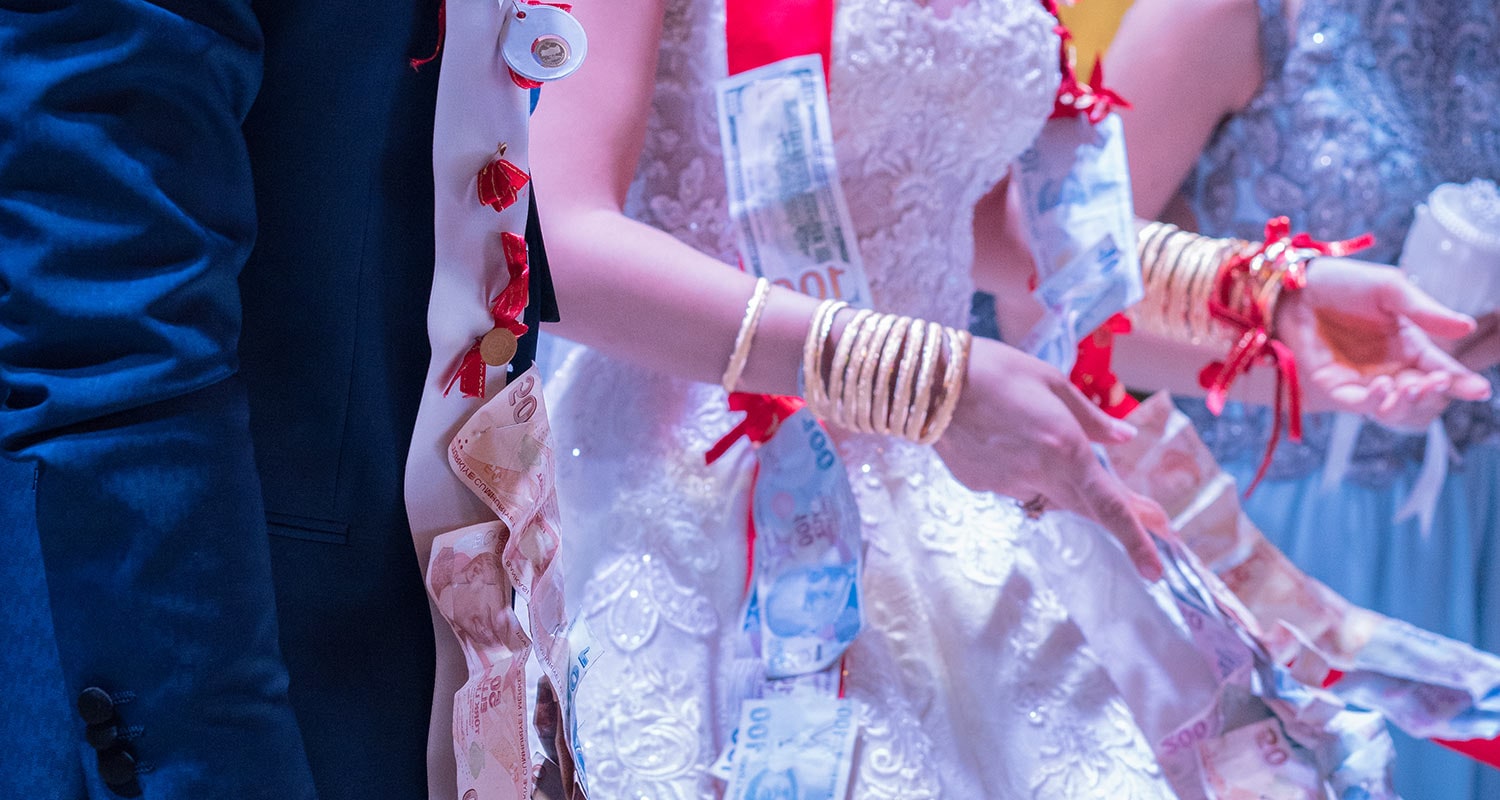

What are wedding customs? Customs - also known as wedding traditions - have evolved over the centuries. Wedding customs have interesting differences and cultural characteristic all over the world. In almost all countries, also in Turkey and Russia, big celebrations are an important part of the wedding.
Traditional and formal in Vietnam: even today, marriage in Vietnam often won't take place without the permission of the parents. Wedding customs in Vietnam also follow clear rules and rituals.
In Poland they have a lot of fun. The bride is symbolically "bought" from the bride's parents before the wedding. Afterwards the newly married couple celebrates with family and friends.
Let's start with a very special culture - the Turkish culture. The Turkish culture is known for celebrating big parties. Accordingly, Turkish weddings are a lot bigger than in many other countries.
After the three phases before the wedding (Kiz isteme, Söz kesme and Nisan), which represent the permit visit, the promise and the engagement celebration, the preparations start about half a year before the wedding. Things like the own apartment as well as the party is being planned during this time.
One day before the wedding the Henna evening takes place. The bride and her female relatives and friends gather at the bride's home and dye their hands with henna. The henna evening is usually celebrated in a large hall. The groom is only allowed a short visit on this special evening. The woman should be able to say goodbye to her parental home and for her to look forward to a new life together with her future husband.
The wedding day begins with the collection of the bride. The bride is taken to the wedding location with beautifully decorated cars. After the ceremony the couple celebrates with at least 300 to 1000 guests. The couple's happiness is sealed with lots of traditional food.
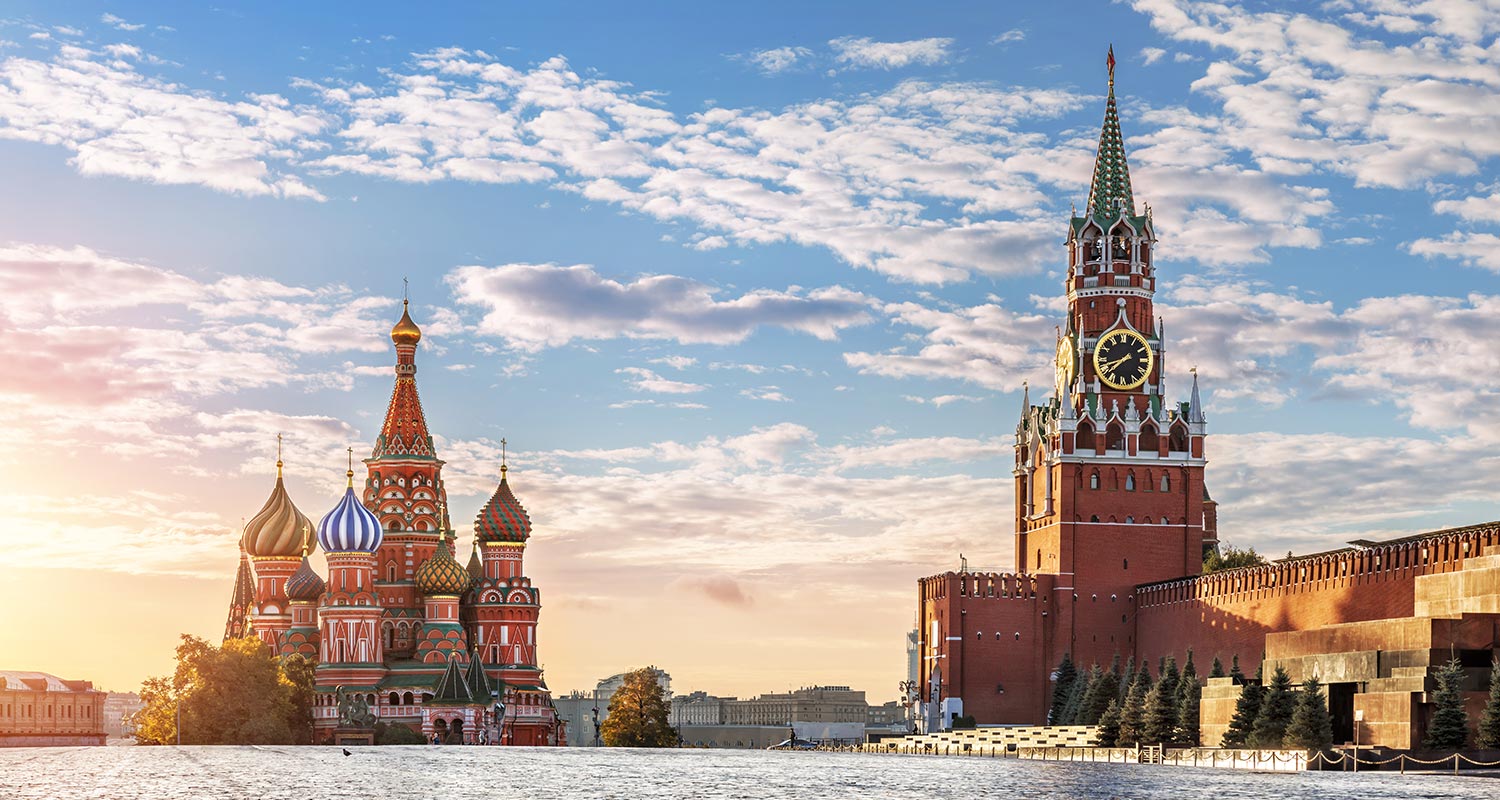

As soon as the wedding couples leaves the registry office or the church after the wedding ceremony, rose petals and coins are being thrown into the air as a celebration of the newly married couple. This custom is intended to provide the married couple with financial security for the future.
Afterwards, the parents welcome the couple with a large savoury braid with salt, which they each try. This is a custom for the parents to get to know each other, as it is common for the bride to move into the groom's house after the wedding.
The celebration is being continued with the Tamada - the nightmare of all shy people who hate to say toasts. The Tamada is the host of the ceremony. His job is to make sure that everyone says a toast to the bridal couple. If anyone does not do so, it is considered as an insult at Russian weddings!
Of course, music and dance are also a must. Between games, toasts and food there are music breaks. The DJ turns up the music and the best Russian pop songs roars from all the speakers. Young and old storm the dance floor! A little later everyone even dances on the tables.
So Russian weddings are loud. Very important is the collective roar of the word 'Gorjko', which invites the bridal couple to kiss.
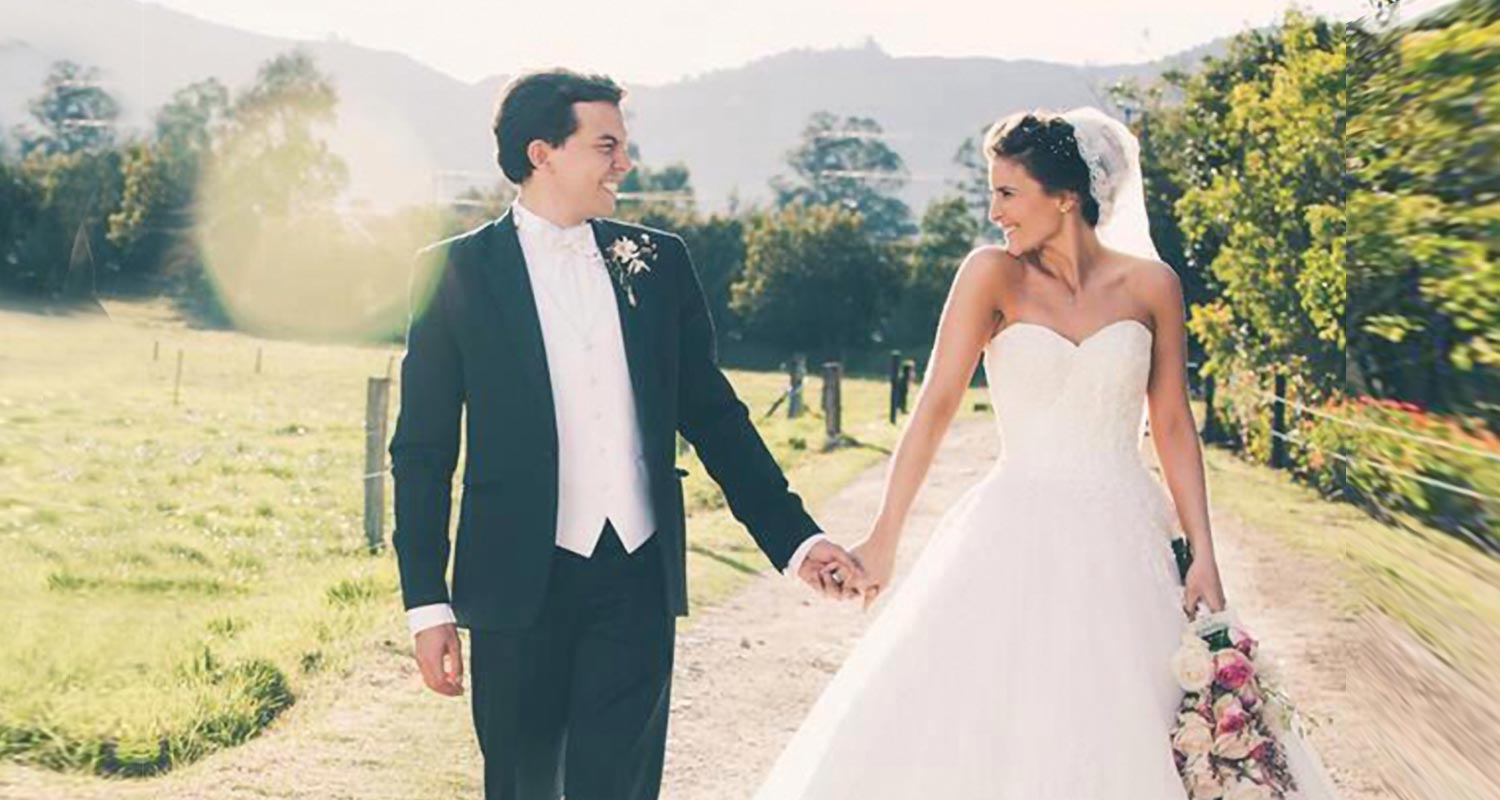

A traditional Columbian wedding consists of many steps which are all carried out with a lot of passion. Respect for the family is a very important aspect in the Columbian culture. Accordingly, many weddings are arranged by the bride's father, who also pays half of the costs.
Before the wedding, the groom asks the future bride’s father for permission to marry his daughter. Parental consent is the most important factor in marriage. Normally this is not a duty, but for reasons of respect this tradition is maintained.
Before the actual wedding, the couple celebrates with an engagement party. On this occasion the families and friends of the future couple come together. During the engagement ceremony, presents are given to the couple. All kinds of gifts are given, but most often accessories for their new home. However, the gifts are not the main aspect of this celebration, the most important thing is the presence of the relatives. With this meeting, both families commit themselves to being one family.
Before the wedding it is common for the couple to celebrate the last night by themselves. The bride celebrates with her bridesmaids and the groom with his best man and closest friends. The most popular destination for this is a flight to the coast of Colombia.
On the day of the wedding it is important that all roles have been distributed. The child who brings the rings to the altar, the bridesmaids and the best man must know their duties. The fact that the couple looks beautiful is the highest priority at the wedding.
For the bride it is customary to wear a white dress and be led to the altar by her father with her beautiful bridal bouquet. The father then hands over his daughter to her fiancé. At the end of the religious ceremony the couple is showered with a rain of rose petals, the guests congratulate the couple and they drive to the reception location in an old, beautiful car.
During the wedding ceremony, to which several hundred guests are usually invited, the bride and groom do not have a moment's peace. The couple drinks, eats and dances with their family and friends. A traditional Colombian wedding is definitely a different story!
At 12 o'clock the "hora loca" ("the crazy hour") starts. At that moment you feel like you're at a carnival. Everyone wears beautiful traditional masks, hats and other pieces of jewellery. A band is playing music during these celebrations. Dance games are performed and a lot of "Aguardiente" is drunk. This is the most famous local spirit in Colombia "fiery water".
The celebration often doesn't end before 6-7 in the morning, the traditional dances and different bands don't end until the father says "end".
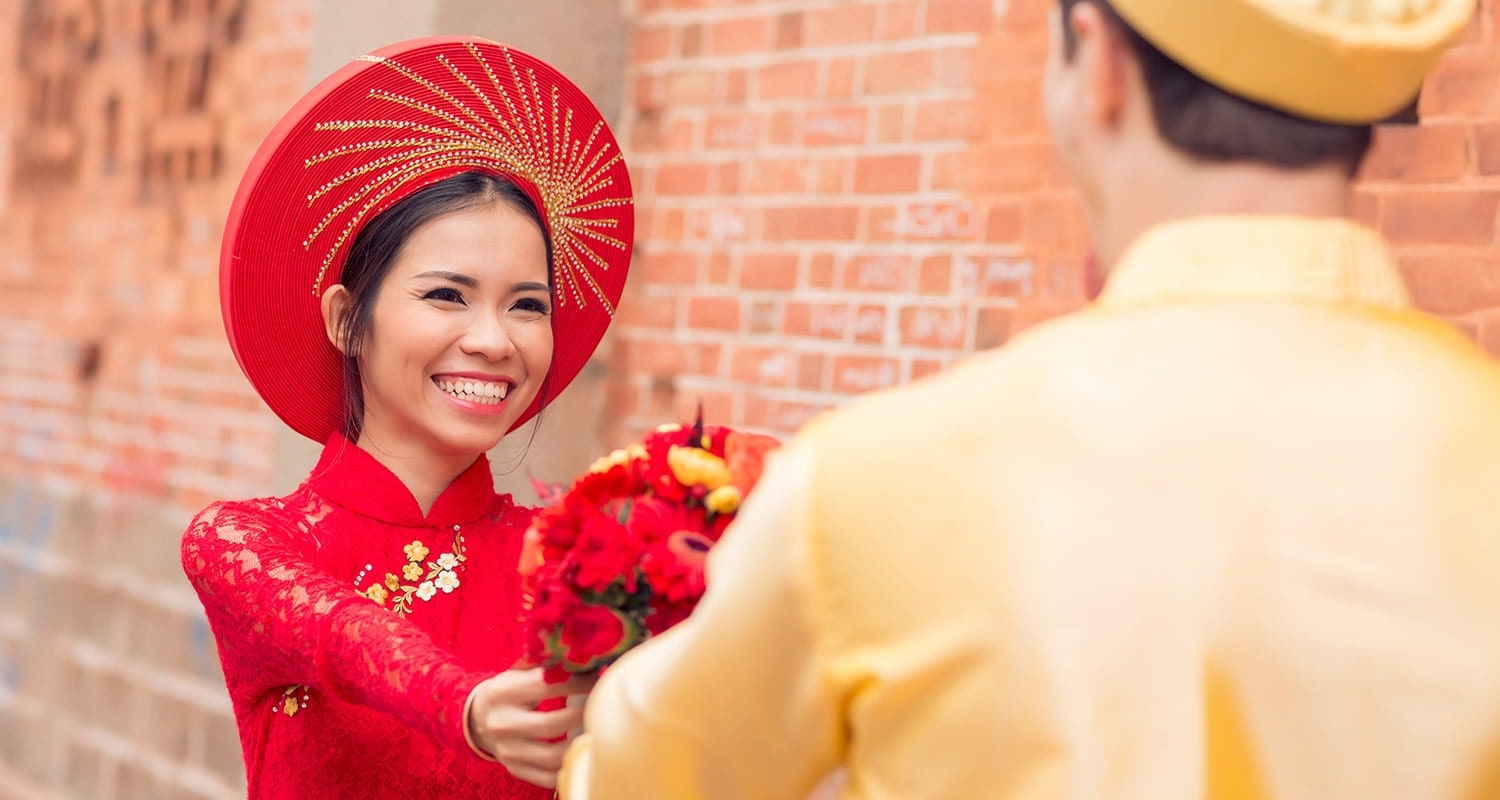

Xin chao ban be - or as they say in English: Hello, dear friends. In one of our earlier blog posts we already discussed traditional weddings in Poland. Now we focus on some even more exotic places - Vietnam.
A traditional Vietnamese wedding consists of many small steps that have to be carried out with care and attention. In the Vietnamese culture, family respect is a very important aspect. Accordingly, many marriages used to be arranged by the parents. Even if this is no longer the case nowadays, parental consent is nevertheless the most important factor when getting married.
Before the actual wedding comes the engagement ceremony (Le An Hoi). On this occasion, the grooms family visits the bride's family and asks them for permission to marry the bride. The grooms family comes with an uneven number of best men who bring gifts to the bride's family such as leaves, fruit, money, etc. The gifts are covered with a red cloth and are then given to the same number of unmarried girls from the brides side. With this arrangement both families commit themselves to being one family.
On the day of the wedding (Le Cuoi), the groom's family visits the future wife's family to ask them for permission to marry her and take her with them to the groom's house for the last time. Together as a family the couple prays in front of the altar and asks the ancestors for permission and a happy marriage. The happiness is sealed with the blessing of relatives and ancestors. The wedding celebrations can now take place.
During the wedding celebration, where several hundred guests are usually invited, the married couple is very busy. Photos are taken, speeches are held and the couple enjoys the party with their family and friends.
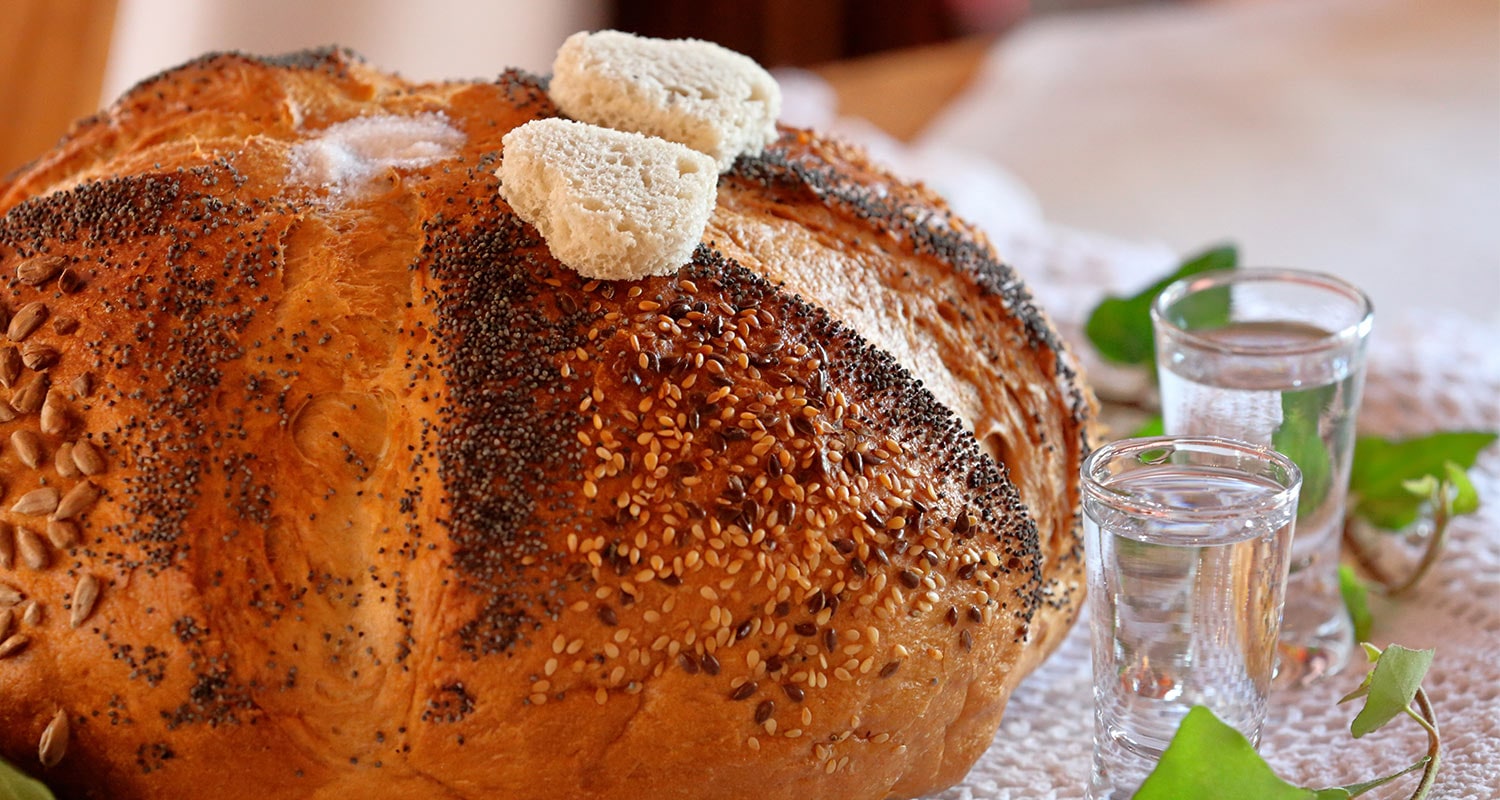

Every country has it’s own and unique wedding customs and traditions. Our former employee Sandra has already been invited to numerous weddings in Poland and reports about interesting and different customs from Poland.
In Poland the bride is picked up from her parents house by the groom and his family according to old tradition. But before the groom gets his bride, he first has to "buy her off". Two relatives of the bride are waiting in front of the parents' house, and the groom has to "pay" them.
Instead of money, they first pay with expensive vodka bottles. But that's not enough for the bride's family until the groom finally pulls out a suitcase full of dollar notes. The whole "game" is accompanied by the loud music of an orchestra. The parents of the future couple wait for their children in their parents house and later give their blessing. Once this is done, the music continues to play and everyone goes to their cars.
On the way to the church they have to stop a few times, because neighbours block the way. This is also part of the tradition. The bridal couple then has to pay the adults with vodka and the children with sweets in order to be able to continue the drive.
In the church, the bridal couple is met by the priest and led to the altar. The priest goes ahead, a child then follows the couple with the wedding rings.
After church everyone drives to the wedding hall together, where the wedding is celebrated. Upon arrival, the bride and groom are given two glasses. In one is water, in the other vodka. Of course, you can't see what’s in each glass. The one who gets the vodka will be the dominant person in the marriage.
When all the guests are seated, homemade broth with noodles is served. After that there are further courses, which the couple put together themselves. After the first courses the bride and groom dance the opening dance.
In the course of the evening further main courses, dessert, vodka, beer and wine follow. There is also plenty of dancing and partying. At midnight, the bridal couple cuts the wedding cake together and gives it to the guests.
The celebrations continue until late at night. Also on the next day the party continues until the evening. Afterwards most of the guests go home. For the journey home every guest gets a piece of wedding cake.
Polish weddings are big, very friendly and involve plenty of food and even more alcohol. If you haven't been to a Polish wedding yet, you should definitely experience one, it's worth it!